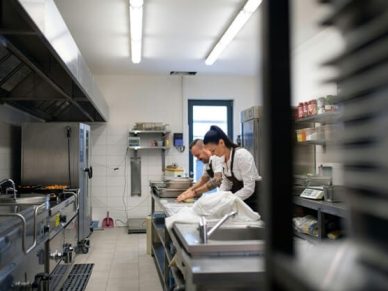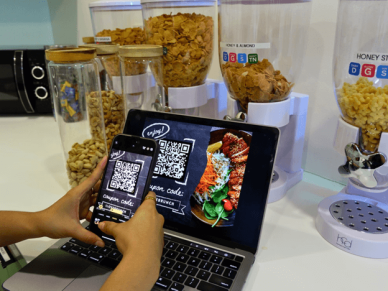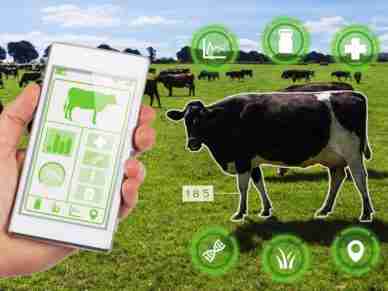Step into the future, where traditional cash registers and manual order-taking are things of the past. Restaurants are turning to smart POS systems to streamline operations and drive growth.
According to a study, the global restaurant POS market was worth $22.26 billion in 2023. But what exactly makes these systems so revolutionary?
Let’s discuss the key features and benefits of integrated POS systems. Plus, discover how they are reshaping the F&B landscape.
What is a POS system?
A POS (Point of Sale) system is a machine that helps businesses ring up sales.
It’s not just about taking your money, though. These systems also track what’s being sold, like how many burgers a restaurant sells daily or how many shirts a store has left in stock. This feature helps businesses manage their inventory. So they know when to order more items.
Some POS systems can also track customer information or help managers see how their business is doing. They’re helpful assistants for businesses to make sales and keep things running smoothly.
Benefits of POS Systems in the F&B industry
POS systems offer numerous benefits to food and beverage (F&B) businesses. Here are some of the key advantages:
- Faster service: With a POS system, taking orders becomes lightning-fast. Instead of writing down orders by hand and passing them to the kitchen, servers can enter orders directly into the system. This attribute means quicker service and happier customers.
- Fewer mistakes: Remembering orders every time is hard. With a POS system, servers can see what the customer wants on the screen. Then, they send it to the kitchen directly, minimizing the possibility of getting orders wrong.
- Inventory management: Tracking how much food and drinks are left can be a headache. But POS systems can do it automatically. They monitor what’s in stock and tell the staff when to reorder.
- Better customer service: When servers don’t have to worry about taking orders and doing math, they can focus more on making customers happy. They can chat with them, answer questions, and ensure everyone’s having a great time.
- Easy payment processing: POS systems make payment quick and easy. Customers can pay with cash, card, or even mobile payment methods without hassle. Some systems also enable customers to pay at their table.
- Detailed reports: Owners need to know what’s selling well and what’s not, how much money is coming in, and where it’s going. POS systems generate reports that show all this information, helping owners make smart decisions.
- Saves time and money: With everything running smoothly, owners and staff can save plenty of time. And as they say, time is money! Plus, POS systems’ efficiency and accuracy can help reduce waste and cut costs in the long run.
And when it comes to restaurant software that offers these benefits and more, integrating SpotOn can be a game-changer. SpotOn’s comprehensive restaurant management platform goes beyond typical POS capabilities, offering many tools tailored specifically for the restaurant industry.
Key Features of POS Integration
POS integration refers to connecting a POS system with other software or systems. It aims to enhance functionality, streamline operations, and improve efficiency. This integration has the following key features:
- Streamlined payment processing: Modern POS systems make it easy to handle payments. They support payment methods like credit cards, mobile payments, and even cryptocurrencies. Integrated payment systems make transactions faster, safer, and less likely to make mistakes. This makes checking out quicker and smoother for customers, giving them more payment choices.
- Employee management tools: POS makes creating schedules easy, paying employees, and checking their performance. Managers can monitor employee hours, see how much they sell, and make reports to see their performance. This feature helps ensure the restaurant doesn’t spend too much on staff, keeps employees happy, and ensures customers get good service.
- Customizable menu and modifier options: Restaurants must be flexible, and smart POS systems help. They let restaurant owners change their menus to fit their specific needs. Owners can add or change new dishes from the POS system. This flexibility enables servers to adjust orders easily to meet customers’ special requests, improving their dining experience.
- Enhanced security and compliance: Protecting customer information and payment details is vital. POS systems have extra safety features like encryption, tokenization, and following PCI rules. These features help stop data breaches and fraud. So, restaurants can make customers trust them more and keep their business safe from bad things happening.
- Mobile POS capabilities: Servers can use their phones to take orders and collect payments. That makes things faster and helps more people get served. Also, restaurants can let customers order and pay at their tables, making eating out even better for everyone.
Tips To Choose the Right POS System
Want to ensure smooth operations and happy customers at your restaurant? Picking the perfect POS system is key. Here are some easy tips to guide you in selecting the right one:
- Understand your needs: Consider what your business needs from a POS system. Do you need inventory management? Online ordering? Tableside ordering? Make a list of your must-have features.
- Consider ease of use: You want a POS system you and your staff can use. Look for systems with simple interfaces and intuitive workflows.
- Check compatibility: Ensure your POS system works with your existing hardware and software.
- Think about scalability: Your business may grow over time, so choose a POS system that can grow with you. Look for systems offering add-on features or easily integrating with other tools as your needs change.
- Consider customer support: What happens if something goes wrong with your POS system? Look for providers that offer good customer support, whether it’s through phone, email, or live chat.
- Check reviews: Research online and read reviews from other business owners who have used the POS systems you’re considering.
- Cost considerations: Ensure you understand the total cost of ownership, including any setup fees, monthly subscriptions, and transaction fees. Choose the one that fits your budget without sacrificing essential features.
POS systems are changing the game for restaurants. They make things faster, help managers know what’s selling, and keep customers happy. With these systems, restaurants can serve better food, make more money, and keep people returning for more. It’s a win-win for everyone involved!
















Leave a Reply